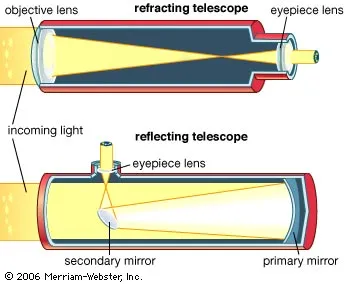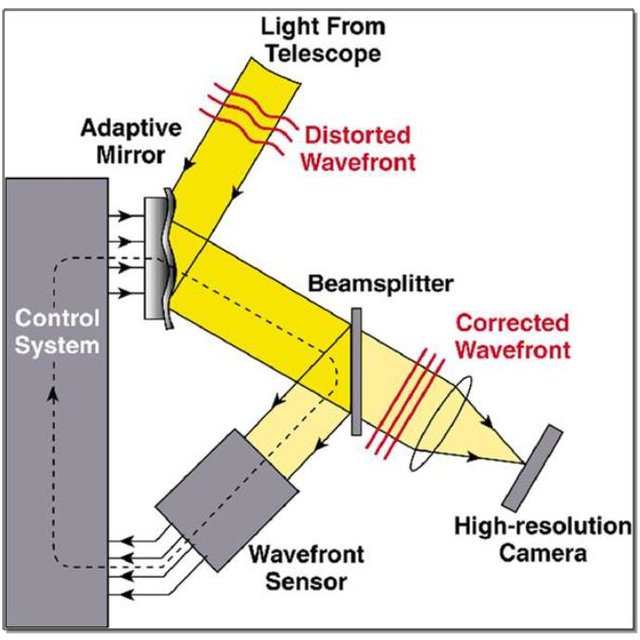

Large telescopes today are reflecting telescopes, as opposed to refracting telescopes. Refracting telescopes are what most people think of when they think about telescopes. Refractors have a long tube with a convex glass lens at the main opening that focuses the light into the eyepiece, magnifying light from the sky. Refracting telescopes are the oldest types of telescopes, with the first ones being invented in the 1600s.
Reflecting telescopes , on the other hand, have a curved mirror at their base that gathers and focuses light into the eyepiece. As telescopes get larger and larger, mirrors are much cheaper to manufacture than high-quality glass lenses, meaning that we can build telescopes capable of collecting much more light without the dramatic increase in cost.

There are many factors engineers have to consider when designing ground-based telescopes. A telescope's ability to capture detailed pictures—its resolution—improves with larger apertures (in this case, the primary mirror). As the primary mirror gets larger, it begins to sag under its own weight. Older telescopes like the Hale Telescope (bottom grid img 7) account for this by creating a large steel structure to hold the mirror in place, but more recent telescopes employ a process called active control.
For telescopes like the Gemini North Telescope (bottom grid img 4), a computer measures the sag on the primary mirror many times per second and applies forces at 120 different locations on the back of the mirror to correct the sag. This is called active control, and it allows us to build much larger and lightweight telescopes.
Location also plays a large role. Ideal sites are high, dark, and dry to minimize atmospheric interference, such as turbulence, light pollution, and weather conditions.
Another way to counteract atmospheric interference is through adaptive optics. A small flexible mirror is placed in the beam of a telescope. A sensor measures how much the atmosphere has distorted the image, and as often as 500 times per second, it sends instructions to the flexible mirror on how to change shape in order to compensate for distortions produced by the atmosphere.

Other sources used besides assigned reading: